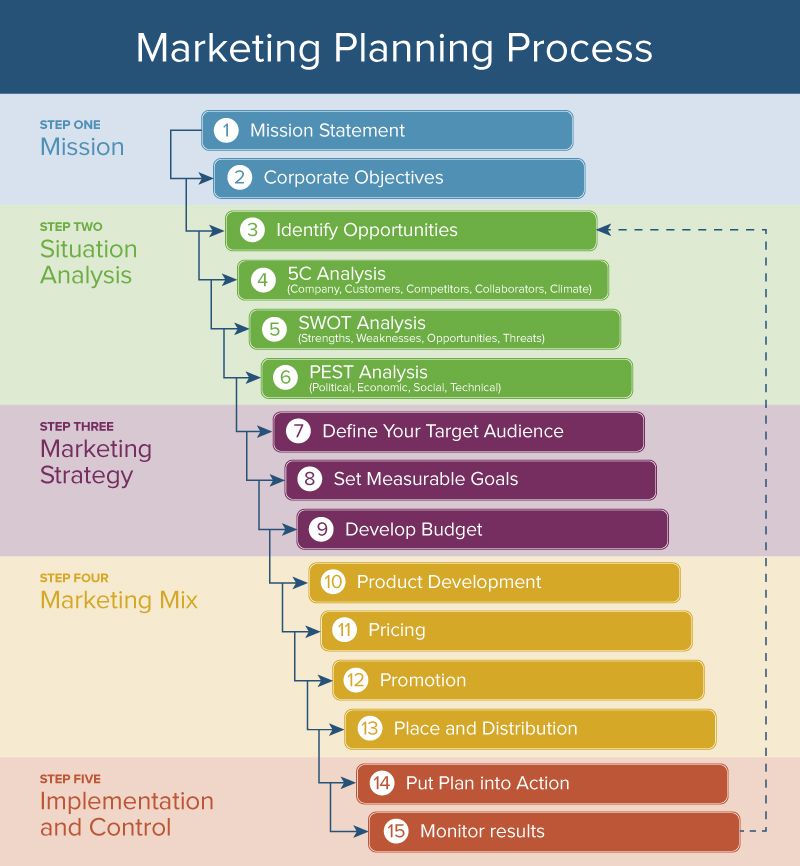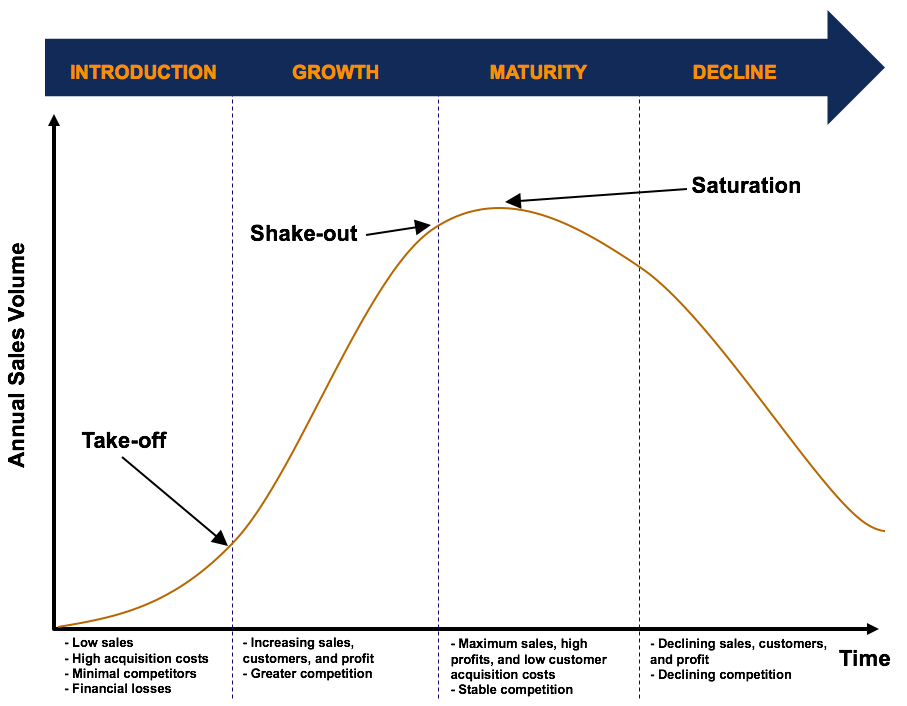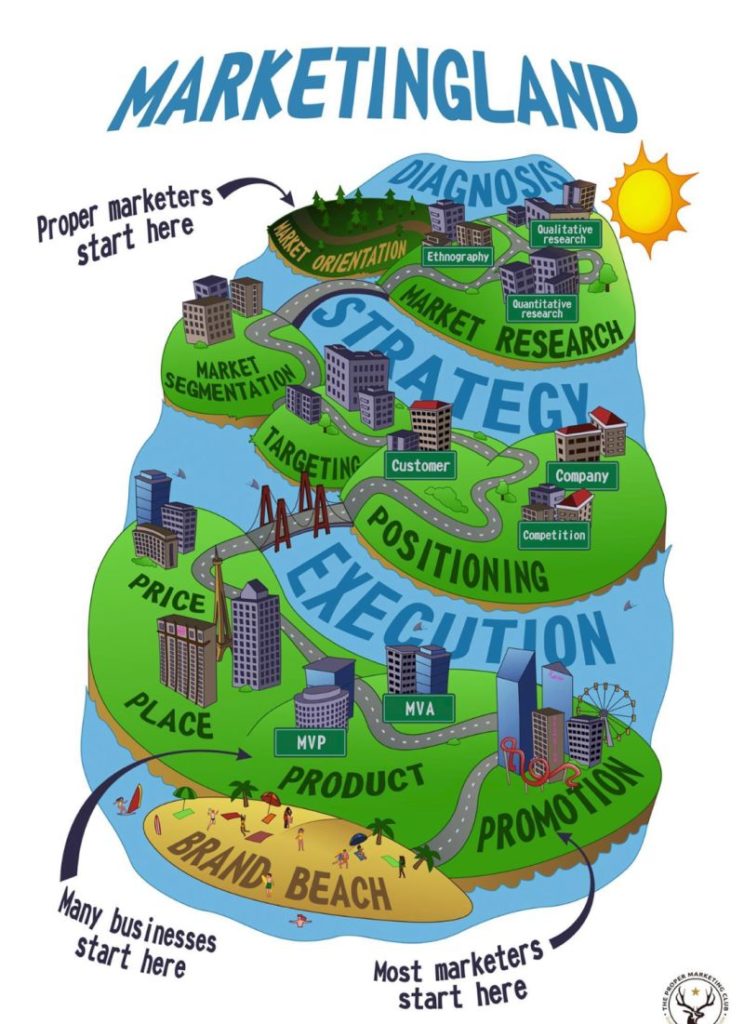
Heard of the 4 Ps of marketing (aka the Marketing Mix)? What about the acronyms STP?
Well, many of the new generation marketers hadn’t. And it figures.
Obsessed with shiny bright objects, these (mostly) new-age marketing aficionados often miss the forest for the trees. They think that any form of Internet-based marketing is the “be-all” and “end-all” — the silver bullet to all marketing woes.
Sadly, nothing is further from the truth, and you’ll find out why…
As a digital marketing agency founder and trainer (I specialise in both social media marketing and content marketing training), I often come across business owners and marketers obsessed with running Facebook campaigns. Focused on using the right Facebook ads to promote their wares, their sole intention is to use social media to sell products.
The more enlightened would ask me to look at their websites to see if they can be refreshed for both Search Engine Optimization (SEO) and conversion. Occasionally, I have clients wishing to strengthen their brand storytelling efforts, having learned about the importance of brand building in the digital world.
While these digital marketing efforts are laudable, they only work if you get your marketing fundamentals right!
Unfortunately, many companies fail to do so.
Revisiting the Strategic Marketing Plan
The most important basics of marketing isn’t how to run Google Ads, build a website, or post a viral Facebook video. Rather, it lies in crafting a strategic marketing plan.
A holistic strategic marketing plan comprises a series of steps as part of the marketing planning process:
- Corporate and Business Mission: What is your business all about?
- Situation Analysis: Where does your business currently stand?
- Marketing Strategy: Who are your target audiences? What are you marketing goals and targets? This may include your Segmentation, Targeting and Positioning (ie STP) dimensions.
- Marketing Mix: What are your 4 Ps? Yes, these are the age-old components of Product, Price, Place and Promotion. This may also include your brand positioning and identity.
- Implementation and Control: How do you execute your plan? What are the metrics of success? What are the timelines for implementation like?
Here’s a good way to visualise this, courtesy of Smartsheet:

The 3 Most Common Mistakes in Marketing
Sadly, many companies do not carefully consider how they should plan, strategise, and implement their marketing.
Here are some of the most common mistakes you will find in marketing.
#1 Failure to Conduct Market Research
A big part of the marketing planning process actually involves researching your market. This would include:
- Customer Research: Who are your customers? What would they be interested in? What are the pain points (or desires) which your product seeks to solve?
- Competitor Research: Are you venturing into a crowded Red Ocean full of sharks? Have you studied who the incumbents in your industry are — and how you can possibly win against them?
- Trends Research: What are the broad overarching factors influencing market demand? Other than technology, issues like a global pandemic (yeah Covid-19, we’re talking about you!), politics, the environment, and societal changes can drastically affect your plan.
Unfortunately, many businesses tend to skip these steps.
#2 Failure to Consider Their Brand Positioning
Knowing where you stand can make all the difference between success and failure. You need to find that sweet spot for your brand, and consider the following:
- SWOT Analysis: What are your brand (and business’s) Strengths, Weaknesses, Opportunities and Threats? How do you overcome your weaknesses and minimise external threats?
- STP — Segmentation, Targeting, Positioning: Who are the exact target audiences that you’re serving? How do you ensure that you hit the right niche audience, and position yourself appropriate? What is your Unique Value Proposition (UVP)?
- Brand Identity: What are your brand values all about? What is your brand’s story, and why should your target audiences care about it? How do you build a community of brand believers?
#3 Failure to Innovate on Their Product
Yes, product is a part of marketing. In fact, it is the first — and most important — P in the hallowed Marketing Mix!
Sadly, many companies fail to consider if their product fits what their target customers desire. They are so in love with their product (or products) that they ignore what the market is telling them.
A good way ensure that your products do not fall by the wayside? Consider the age-old Product Life Cycle (see below) and where your product fits.

Courtesy of Corporate Finance Institute
How Do Digital Marketing Strategies Fit?
Now if you look carefully at the marketing planning framework above, you’ll realise that digital marketing is nowhere to be found!
What many companies do is to squish digital marketing into the “Promotion” section of the Marketing Mix. This means that digital marketing is treated very much online advertising and public relations — a marketing tactic aimed at generating awareness, publicity, and sales.
Unfortunately, this grossly underestimates the true power of digital channels like search engines, social media networks, websites, instant messages, and emails.
While digital marketing strategies like SEO, content marketing, social media marketing, Pay Per Click (PPC) advertising, and email marketing are great ways to broaden your customer reach, we shouldn’t neglect the importance of addressing your marketing fundamentals.
No amount of fancy display ads, conversion-optimized websites, tear-jerking Facebook videos, or viral YouTube videos can save a poorly conceived product. Or a badly defined brand.
What Should Marketers Do?
Given this situation, what then should marketers — especially digital ones like myself — do?
Here are some useful food for thought:
- Deploy digital channels for market research and customer analysis. There are lots of research tools and techniques you can use — SEO keyword research, social media buzz analysis, competitor analysis, keyword trend analysis, and so on.
- Use online market surveys and focus groups to refine your products and services. Don’t just use Facebook or Instagram to push your product — ask your target audiences what they’d like to see. Better yet, recruit a couple of them for a real-life focus group session.
- Communicate your brand online and build a loyal community. Focus on your community of users, and constantly seek feedback on how they are using your products or services, what challenges they face, or what ideas they may have.
- Incorporate digital channels in your pricing and distribution strategies. This doesn’t just mean e-Commerce — it could also mean doing A/B/C tests to determine which price points work better, as well as the ideal social media channels to reach out to paying audience. (And let’s not forget about instant messaging, which is fast becoming a vital node in online commerce.)
- Serve your paying customers through online customer experience management. Focus not only on online ads and paid or organic traffic. Instead, consider how you can deploy your website, social media pages, and instant messaging channels to better serve your customers.
Conclusion
Ignoring the fundamentals of marketing can be perilous for your business or your brand.
The best digital marketing tactics in the world cannot save a poorly conceived product in an overcrowded market filled with me-too competitors.
Rather than treat digital marketing strategies as yet another promotional channel, consider how online technologies and platforms can be used to better shape your unique value proposition, define your key product attributes, build your brand, and delight your customers.
PS — Check out this wonderful infographic shared by my friend Shaun Lee on a LinkedIn post. It neatly summarizes some of my pointers above!


This is very helpful content for new marketers who are trying to contextualize theories and putting them into practice. Thanks for writing this.
No Doubt! Content marketing is the way to grow the audience and boost your business. With revenue generation it also helps the target audience to get problems solved.
Thanks for sharing this informative post
Clearly, you’ve mentioned each and every word and infographic worth speaking itself. appreciate your post it helps a lot in the future to not do this kind of silly mistake again.
Keep sharing!!